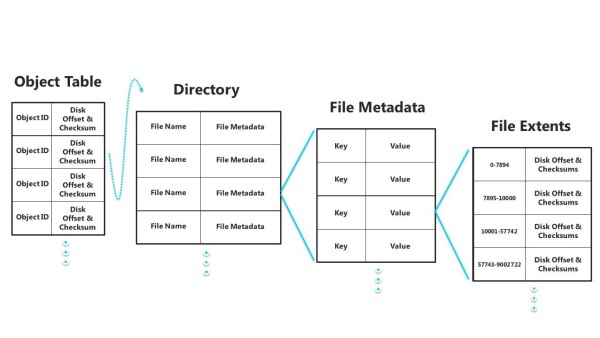Firstly, to be clear, ReFS, which stands for 'Resilient File System' will only be available on Windows Server 8, however, will be accessible from clients supporting NTFS, as it supports the same APIs.
The first step Microsoft has taken with the new filesystem is to improve its ability to scale. Whilst NTFS at its core utilised B+ Tree structures to index data, ReFS uses only these structures throughout every element of the filesystem, ensuring that both directories and files can grow to large sizes with little impact on performance, a limitation of NTFS.

Microsoft has also improved disk space allocation, providing three separate allocation tables that keep track of free space; the large, medium and small allocators, ensuring better cohesion of files and a more efficient use of space.
To prevent file damage stemming from power loss, the system now performs what's known as allocate-on-write, this means that the system will never simply overwrite existing data when updating a file and instead, writes to a new location on the hard disk, only making the new write part of the updated file once it has completed. By avoiding the need for journals to track changes and implementing writing that is not space constricted, it's also possible to perform many, larger data update tasks in fewer iops.
The new filesystem is also capable of detecting corruption, and provides checksums of all metadata, stored in a separate location, allowing for the detection of lost and misdirected writes, along with degradation of the storage media. Optionally, checksums may also be generated for file contents, a feature known as 'Integrity Streams'. When paired with the 'Storage Spaces' feature we spoke about previously, ReFS is capable of not only detecting corruption, but correcting it, by seamlessly working with the Space to call up all copies of the damaged data, comparing them with its checksum to determine which are intact and then using them in repairing the damaged data. In the event of a drive failure, ReFS will dynamically redirect writes to a new location on a working drive.
The core concept behind ReFS is that it can continue to function in the event of device failure or corruption. It's looking as though Microsoft intends to make RAID redundant in Windows Server 8, at least for smaller scale applications, a no doubt welcome feature for firms looking for the cheapest hardware possible, who don't wish to spend money on a costly SAS RAID controller. Whilst we can not say for sure until the performance figures role in, with CPU performance and core count rising, how this new filesystem performs against say, a RAID implementation of NTFS, may very well come down to how efficiently the filesystem has been implemented. It'll be an interesting game changer should benchmarks show the two approaches to be similar in performance.
For a more detailed list of features and workings, head on over to Microsoft's blog post.













